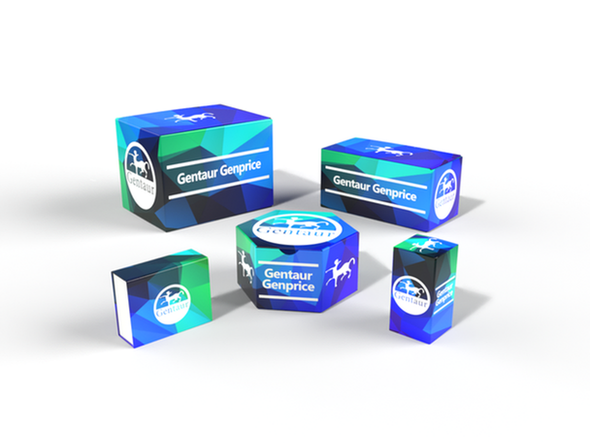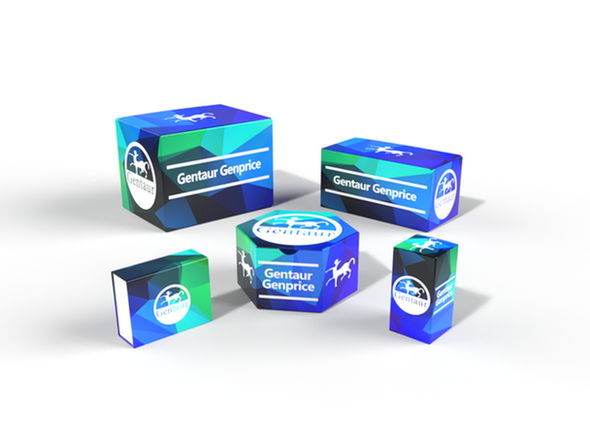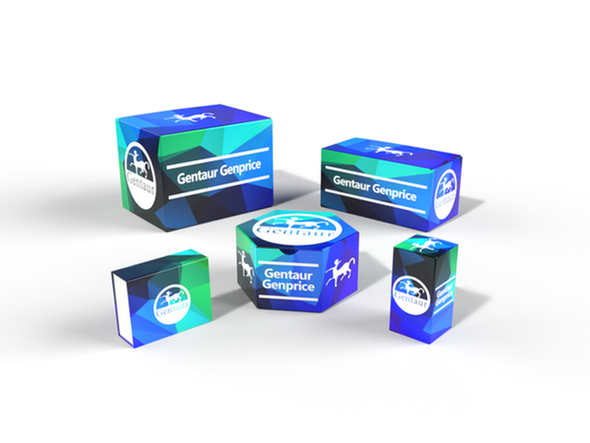740
Rat Sodium/hydrogen exchanger 3 (SLC9A3) ELISA Kit | AE18295RA
- SKU:
- 740-AE18295RA
- Availability:
- Usually ships in 5 working days
Description
Rat Sodium/hydrogen exchanger 3 (SLC9A3) ELISA Kit | AE18295RA | Gentaur UK, US & Europe Distribution
Species Reactivity: Rat (Rattus norvegicus)
Abbreviation: SLC9A3
Alternative Name: MGC126718; MGC126720; NHE3; solute carrier family 9 (sodium/hydrogen exchanger) ; isoform 3
Application: ELISA
Range: 0.312-20 ng/mL
Sensitivity: 0.126 ng/mL
Intra-Assay: ≤7.2%
Inter-Assay: ≤9.5%
Recovery: 1, 09
Sample Type: Serum, Plasma, Other biological fluids
Detection Method: Sandwich
Analysis Method : Quantitive
Test Principale: This assay employs a two-site sandwich ELISA to quantitate SLC9A3 in samples. An antibody specific for SLC9A3 has been pre-coated onto a microplate. Standards and samples are pipetted into the wells and anySLC9A3 present is bound by the immobilized antibody. After removing any unbound substances, a biotin-conjugated antibody specific for SLC9A3 is added to the wells. After washing, Streptavidin conjugated Horseradish Peroxidase (HRP) is added to the wells. Following a wash to remove any unbound avidin-enzyme reagent, a substrate solution is added to the wells and color develops in proportion to the amount of SLC9A3 bound in the initial step. The color development is stopped and the intensity of the color is measured.
Product Overview: An apical membrane Na+/H+ exchanger is involved in transepithelial, electroneutral Na+ absorption across renal and intestinal epithelia. The apical Na+/H+ exchange activity is pharmacologically distinct from the basolateral Na+/H+ exchange activity, notably in terms of response to kinase regulation and in addition by the diuretic amiloride. NHE1 (SLC9A1), the first of these exchangers to be cloned, localizes by immunocytochemical studies only to the basolateral membranes of polarized epithelial cells. Transfection of OKP cells with dominant-negative PYK2 or small interfering PYK2 duplex RNA blocked acid activation of NHE3, whereas neither had an effect on glucocorticoid activation of NHE3. Dominant-negative PYK2 also blocked acid activation of SRC kinase, which is required for acid regulation of NHE3.
Stability: The stability of ELISA kit is determined by the loss rate of activity. The loss rate of this kit is less than 5% within the expiration date under appropriate storage condition. The loss rate was determined by accelerated thermal degradation test. Keep the kit at 37°C for 4 and 7 days, and compare O.D.values of the kit kept at 37°C with that of at recommended temperature. (referring from China Biological Products Standard, which was calculated by the Arrhenius equation. For ELISA kit, 4 days storage at 37°C can be considered as 6 months at 2 - 8°C, which means 7 days at 37°C equaling 12 months at 2 - 8°C) .










